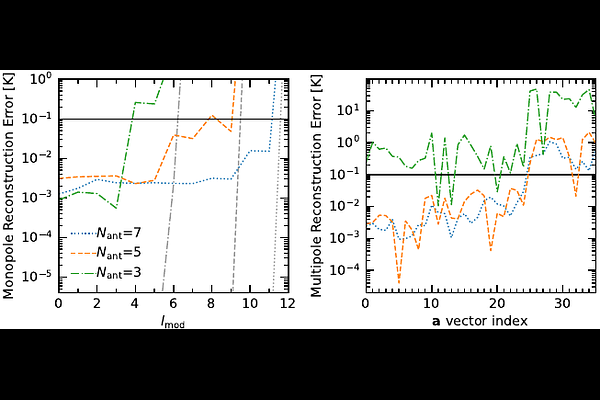Low multipole mapmaking for global 21-cm experiments

Low multipole mapmaking for global 21-cm experiments
Yordan D. Ignatov, Jonathan R. Pritchard
AbstractThe 21-cm global signal is obscured by very bright galactic and extra galactic foreground emissions. Typical single-spectrum fit (SSF) based methods for foreground/signal separation can result in biased estimates of the cosmological signal due to the presence of spectral oscillations induced by the interaction between chromatic beams and the spatial shape of the foregrounds. Modelling this interaction requires some amount of assumed foreground information. We present a mapmaking-based approach which describes the beam-weighted observation of the sky by multiple globally-distributed antenna experiments as an observation equation. This equation is inverted in order to estimate the low-order sky modes ($\ell\lesssim10$). The resulting chromaticity-free sky monopole is then fit with a smooth foreground function and a 21-cm model. Given the insensitivity of global 21-cm experiments to small angular scales, we rely on the mean and covariance of higher-order foreground modes being known. We show that this mapmaking-based method is capable of inferring the cosmological signal in cases where a SSF with a simple beam-factor based chromaticity correction fails, even when the foreground model used in the mapmaking method features uncertainty at the 10\% level.